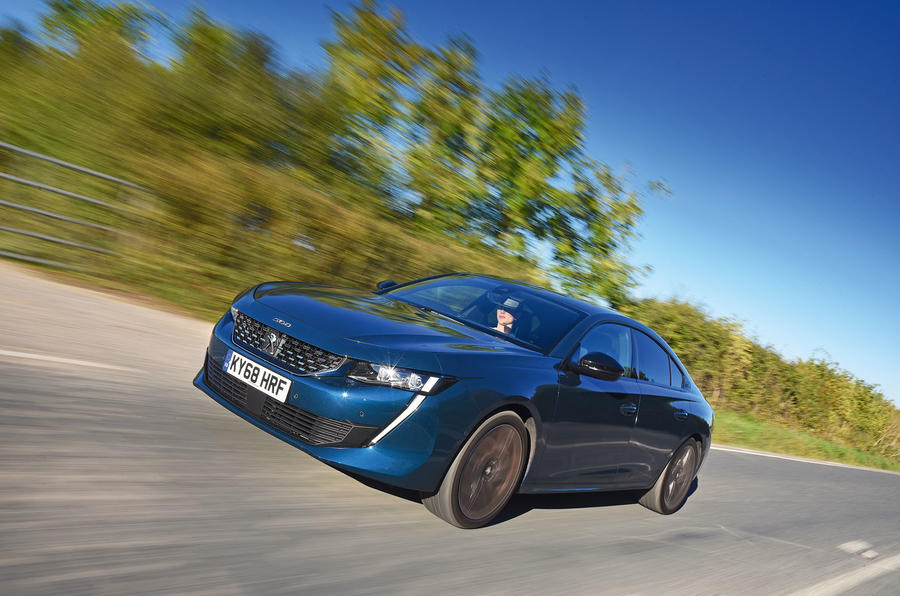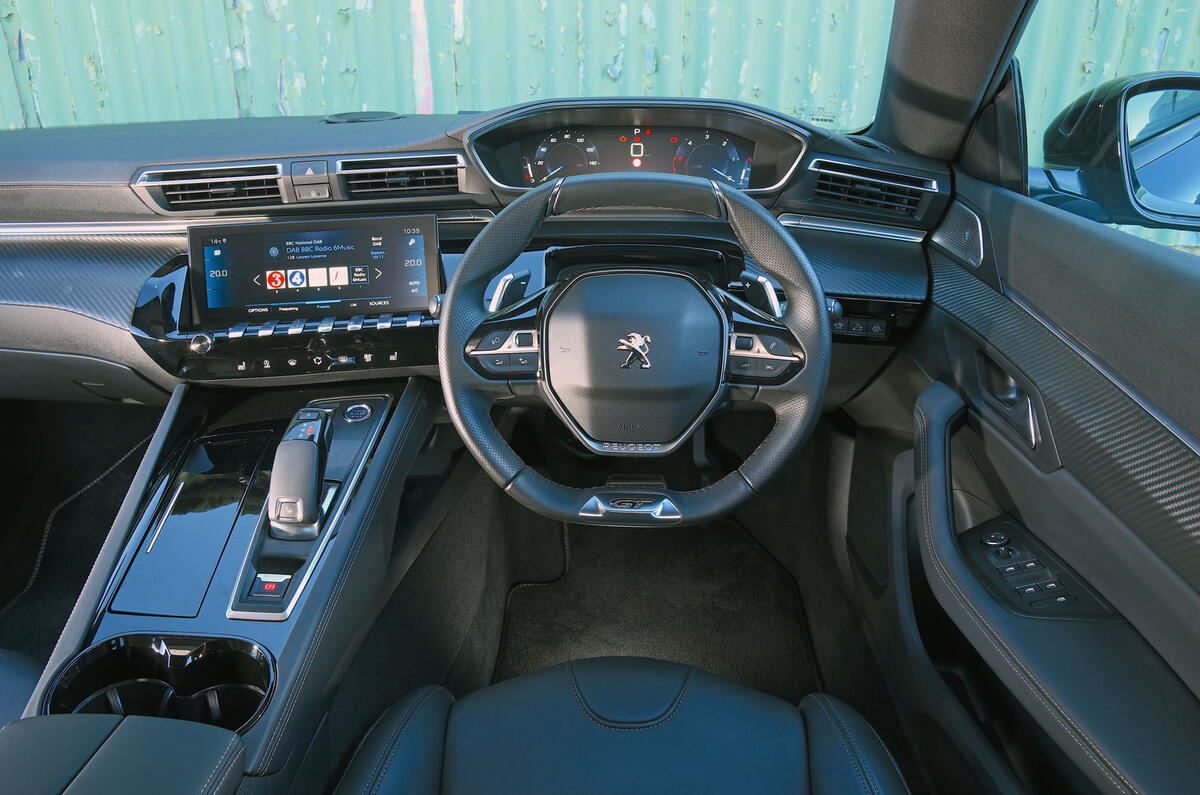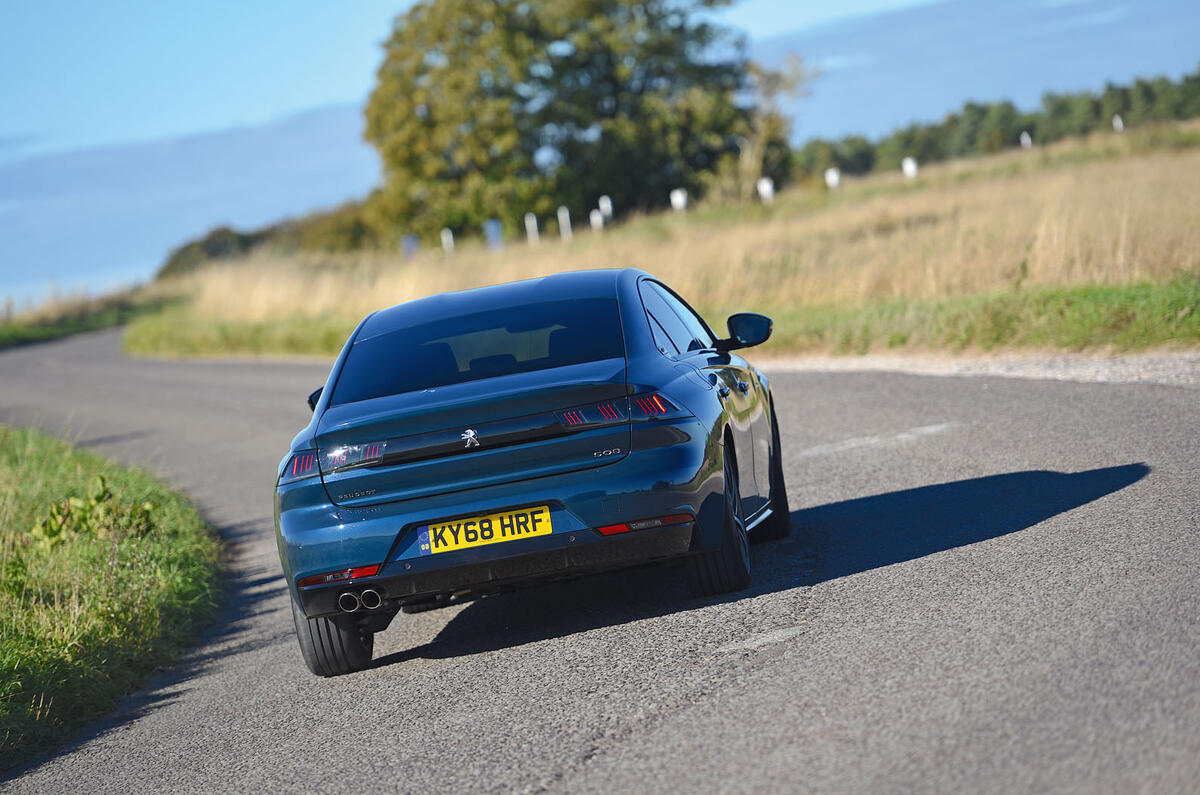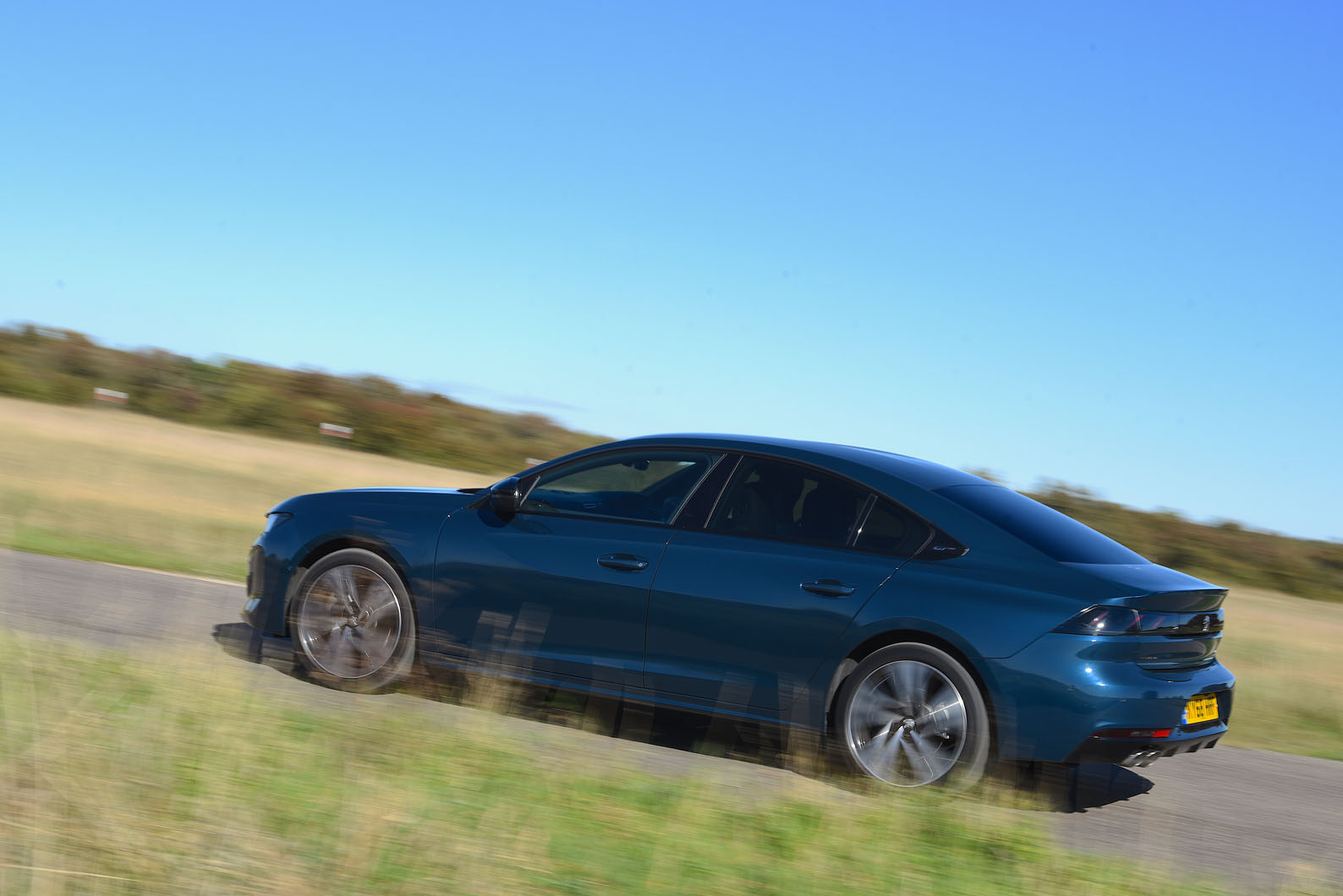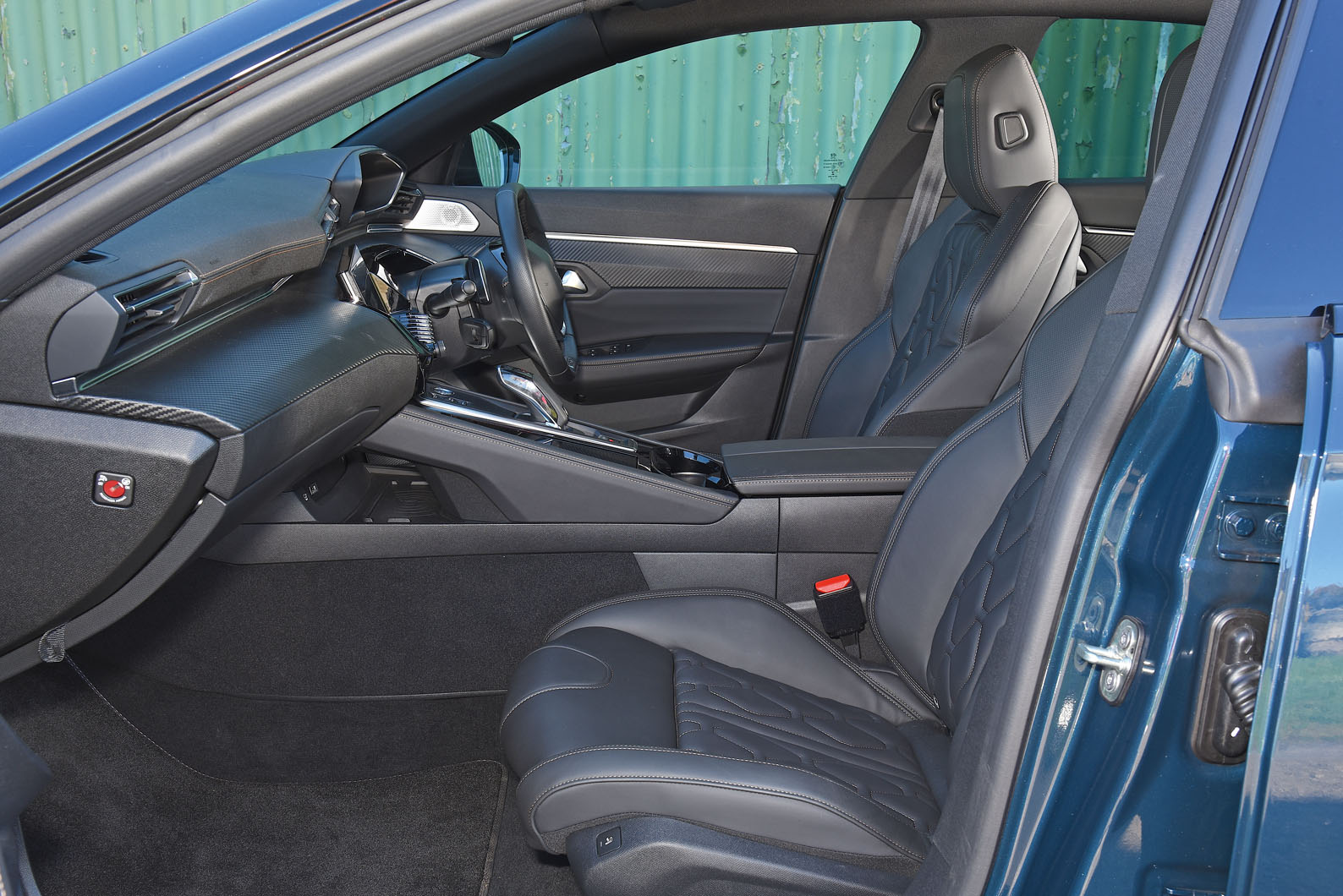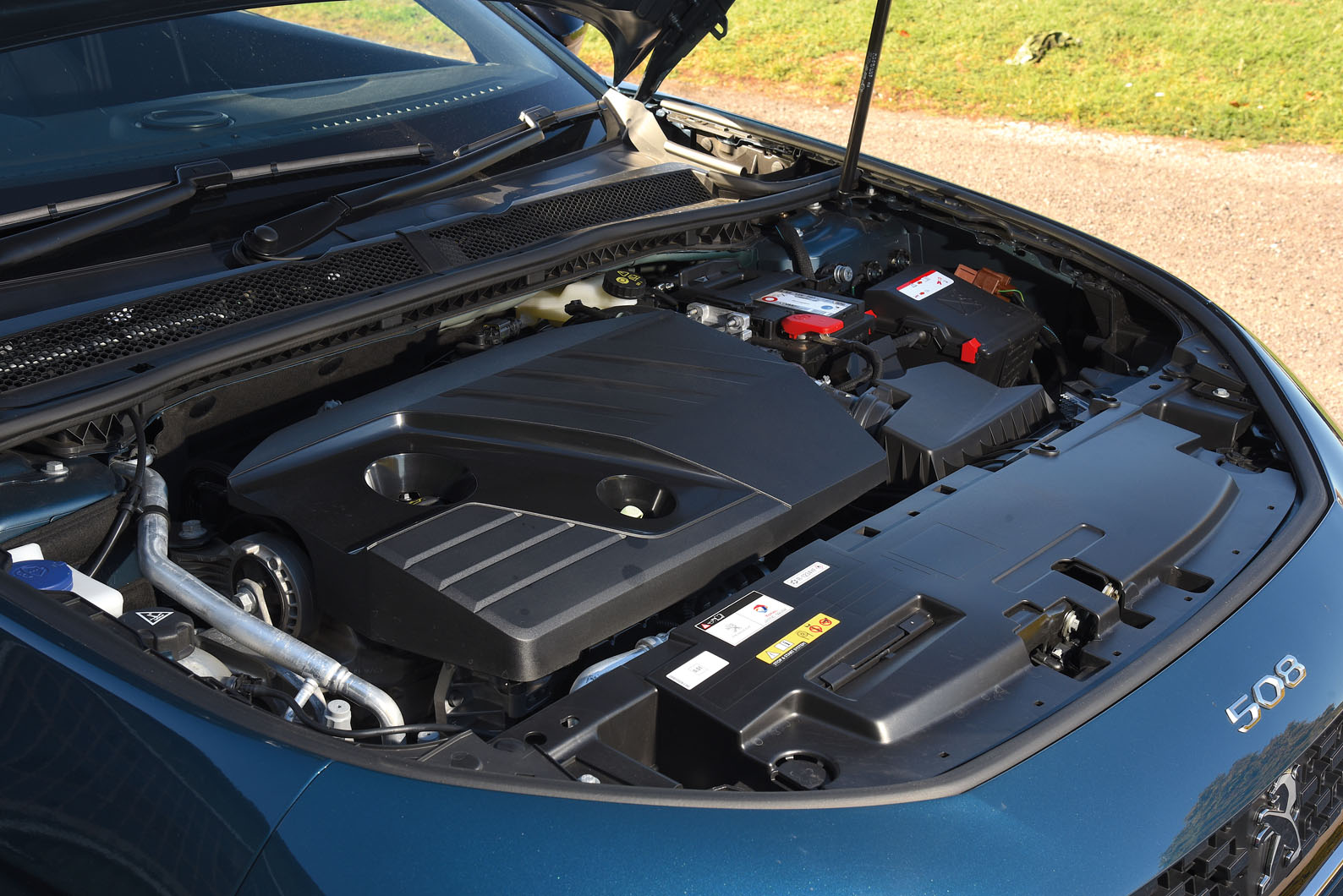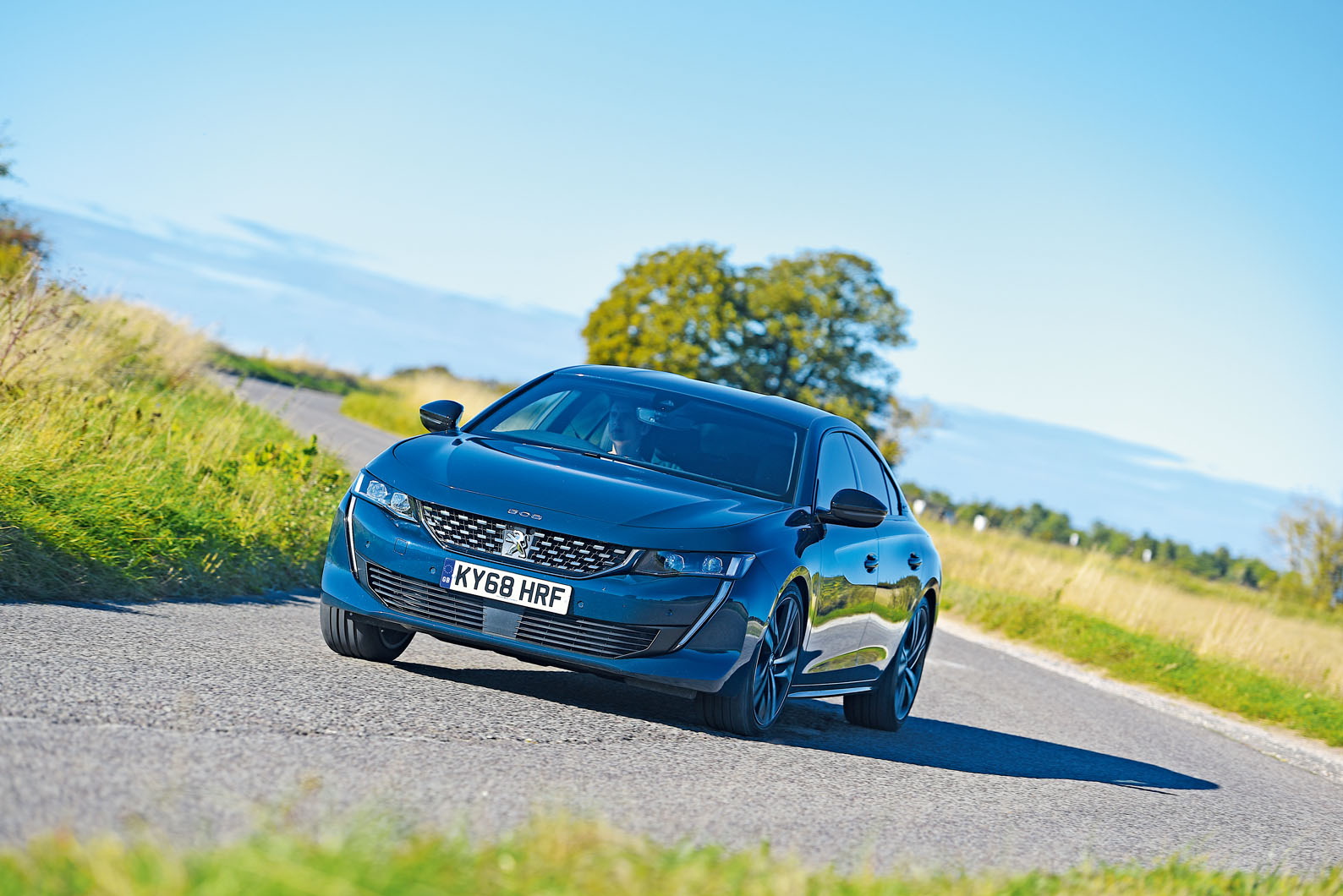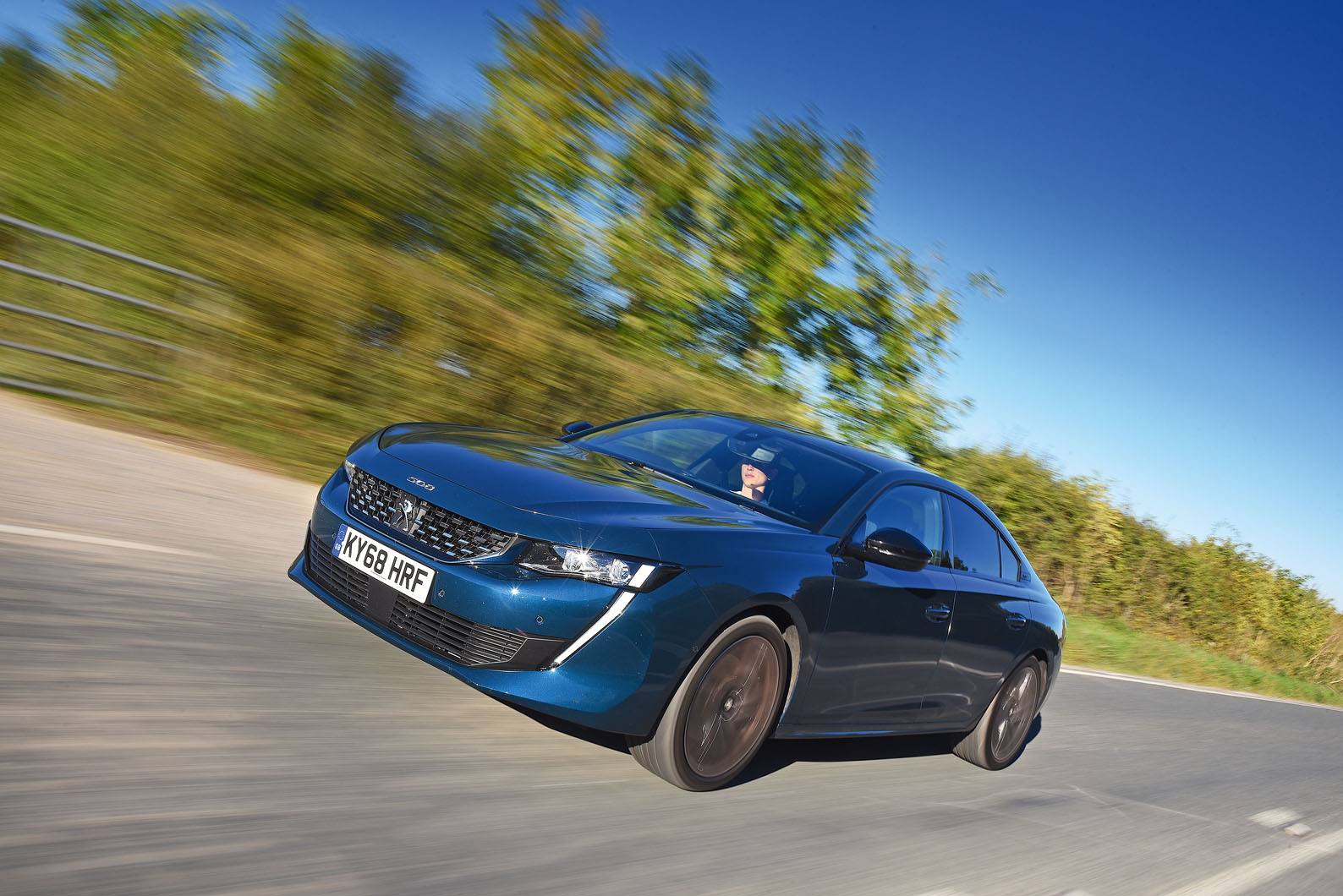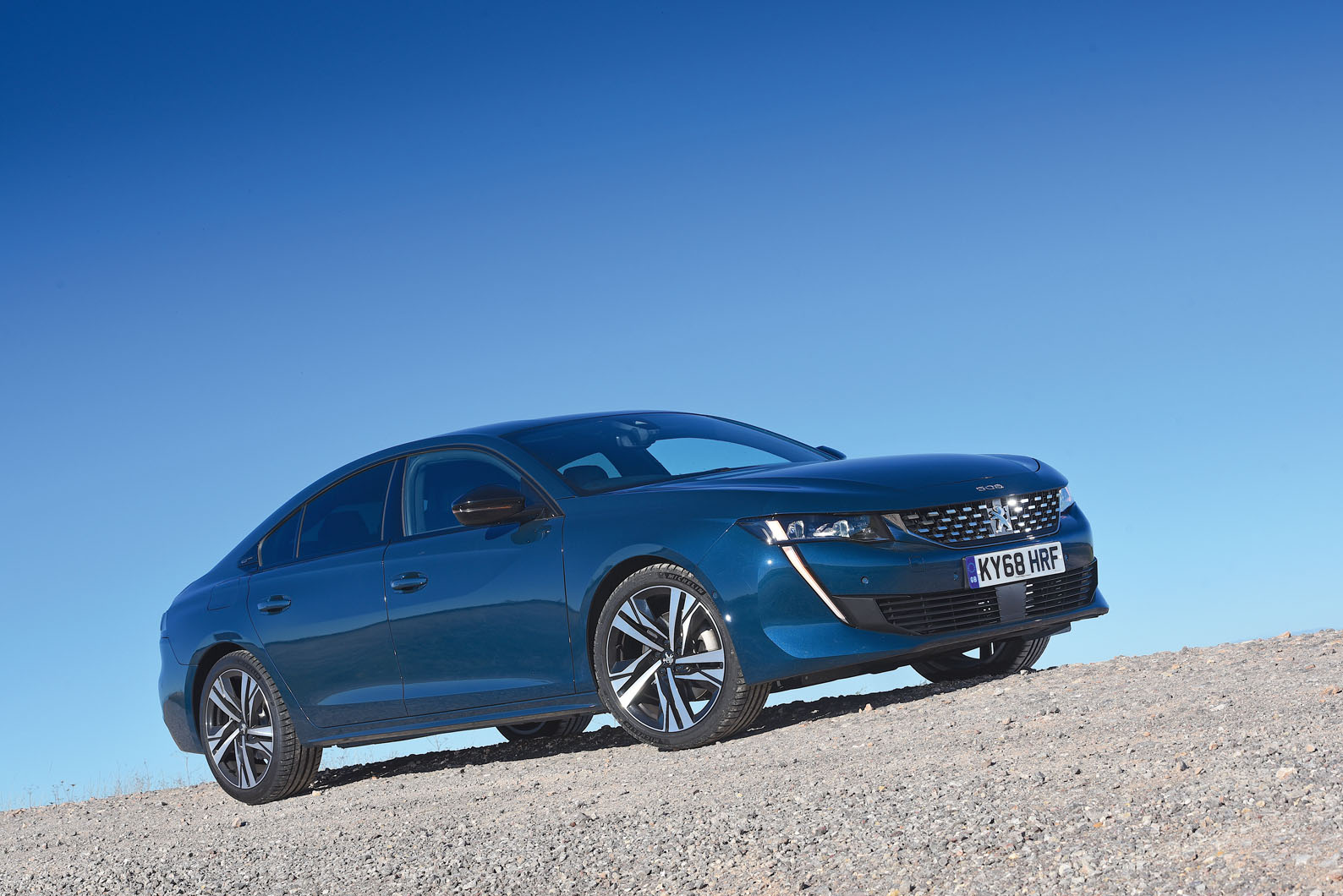The same defining neat sense of compactness that adds to the appeal of the 508’s exterior comes across quite plainly as you acclimatise to the car’s cabin. There isn’t the sheer width you’ll find in some cars in this class, though – the result being that while the 508 seems to sit within the lane of a typical UK A-road with a bit of space to breathe, it’s probably not a car in which to try to put three child seats across the back bench or in which to seat three adults in the rear.
Adults occupying the outer rear chairs won’t find masses of head and knee room, either, although there will be plenty for a typical family of four. The Peugeot’s boot, meanwhile, is about 10% to 20% smaller than you might find elsewhere for your money, although it’s still on a par with the saloon class average for volume.
Anyone who has driven one of Peugeot’s latest generation of cars – anything since the Peugeot 3008 of 2016 – will recognise the same kind of materially rich, nicely alternative ambience in here. There is, though, perhaps a little bit too much glossy black plastic on the 508’s centre stack and transmission tunnel, and a few too many harder, cheaper plastic mouldings up high and down low around the cabin, to convince you that you’re sitting in something that’s as expensively hewn as an Audi, Mercedes-Benz or Volkswagen.
Still, Peugeot makes up for that deficiency by delivering a more stylish, interesting interior than you’ll find from at least some of those brands – although not, admittedly, one of such dutiful attention to detail. The 508’s seats aren’t the most comfortable you might have sat in, with seat cushions that, when extended, leave a bothersome gap under your thighs.
The car’s i-Cockpit control layout, with its high-mounted digital dials and necessarily low-slung steering wheel, won’t suit everyone – although it bothered us much less here than it has in other Peugeots. Meanwhile, the car’s line of ‘piano key’ infotainment shortcut buttons robs you of the one handy place where you might have rested an extended left arm while operating that all-important central touchscreen display.
Our GT-specification test car came with very pleasant full-grain leather (you get only part-leather as standard on a mid-spec model). On balance, however, the 508’s inviting and alternatively executed cabin can still be considered a selling point for the car.
The 12.3in digital instrument display is different from many in that you look at it over the top of the steering wheel rather than through the orbit of it. In other Peugeots, we’ve struggled with that notion, having to accept putting the wheel at an unnaturally low angle to make the dials fully visible. In the 508, most testers said they could see the instruments better.
The car’s instrument dial is customisable too – although it’s not like the one on an Audi TT, which has to do the usual job of the infotainment display as well. You get an 8.0in central touchscreen display on entry-level cars, rising to a 10.0in ‘high-definition’ one with Allure trim and upwards and as fitted to our car.
Piano key menu buttons make the central touchscreen easier than it might be to navigate, and the display looks crisp and attractive, rendering navigation mapping more clearly than we’ve seen in other Peugeots.
You have to go all the way to GT trim level to get Peugeot’s Focal premium audio system, though – and the system isn’t so good that it would be worth the outlay on its own.

